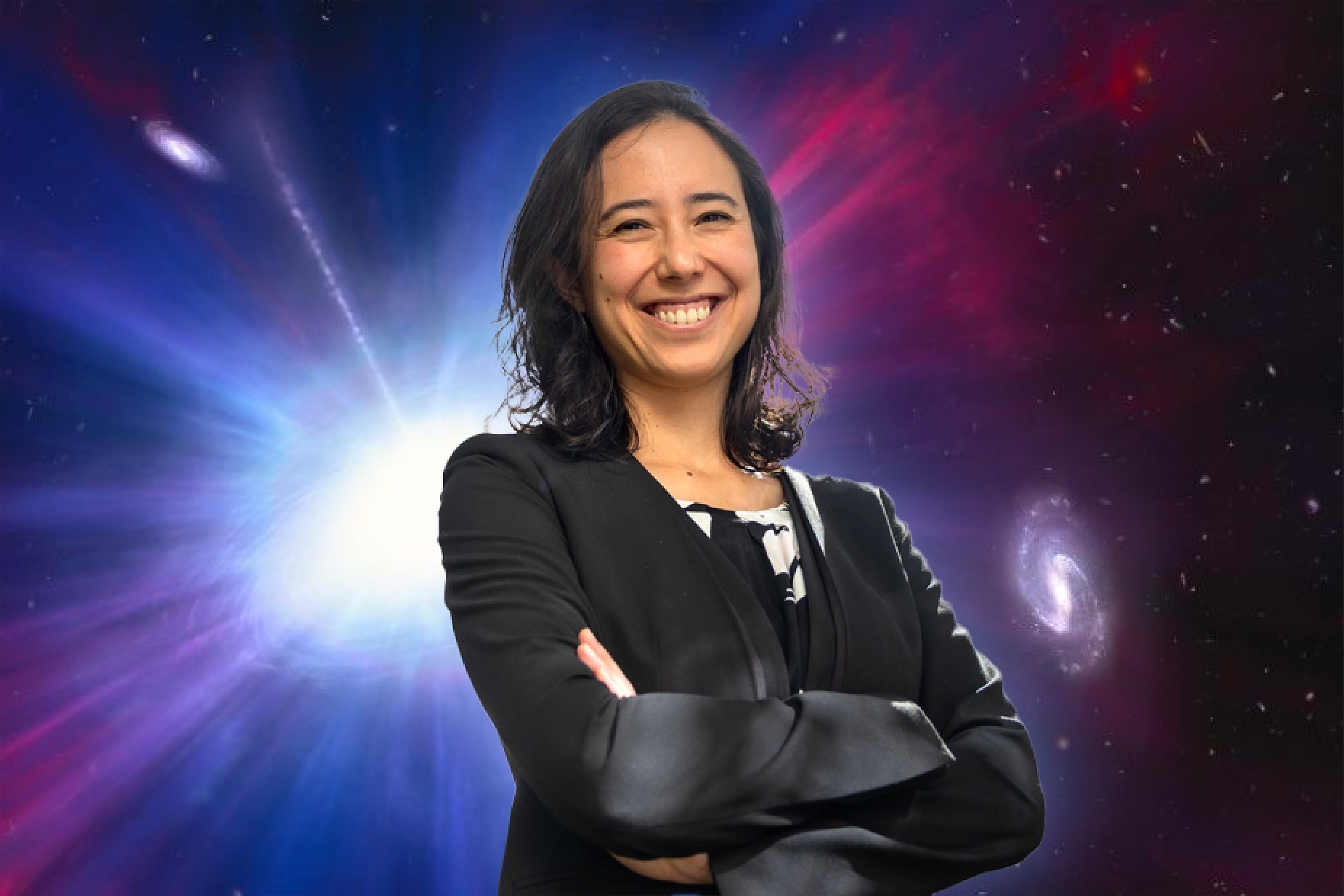Alum Is First to Spot Mysterious Cosmic Explosion
-
-
Slice of MIT
- 1
Filed Under
Recommended

Anna Ho ’14 is in a reunion year. Are you? MIT Tech Reunions takes place May 31–June 2, 2024. (Some milestone reunion classes will celebrate May 30–June 2). Learn more.
Anna Ho ’14 was looking at data from an observatory in Southern California on September 7, 2022, when she discovered that something far out in space had exploded, dramatically.
That’s not particularly unusual in her line of work, since Ho is an astronomer who studies the violent deaths of stars. But this particular explosion turned out to be something that no one had ever seen before. Rather than petering out rather quickly, as expected, it kept on flaring—each burst as powerful as a supernova but only a few minutes’ long.
“It was just crazy,” Ho says. “You have a list of possible things you might see, and this was way outside that list.”
Ho led the effort to learn more about the phenomenon, enlisting astronomers at observatories all over the world—including in Thailand, Taiwan, Sweden, China, Israel, and the United Kingdom—to contribute data. They had to act fast because the phenomenon, technically among a class called luminous fast blue optical transients (LFBOT), was short-lived.
[This discovery is] an illustration of why I love this work—very surprising things can happen.
In fact, until Ho spotted this one—which the team nicknamed “Tasmanian Devil”—only about four LFBOTs had ever been observed, and all had dimmed in a matter of days. The Tasmanian Devil was completely unprecedented because it could be seen for months.
“It’s an illustration of why I love this work—very surprising things can happen,” Ho says. “I feel really lucky to get to do what I’m doing.”
In November 2023, the journal Nature published the team’s findings, with Ho as the lead author of the paper and 76 coauthors. National Geographic then picked up the story, and Ho experienced some busy days fielding press requests. The National Geographic article, “What Is Causing These Massive, Mysterious Explosions in Space?” was published in January 2024.
“The flares had to be produced by something traveling very fast in our direction—at close to the speed of light,” Ho says. What’s capable of driving materials to those high speeds? The team’s conclusion was that the unusual flares that emanated from the Tasmanian Devil were caused by either a neutron star or a black hole.
Interestingly, Ho didn’t plan to become an astronomer. She expected to major in neuroscience when she first came to MIT. Then a conversation with MIT astrophysicist Paul Schechter and a book he recommended (First Light: The Search for the Edge of the Universe by Richard Preston) piqued her interest in the field. She decided to do a summer internship at the National Radio Astronomy Observatory in Virginia, and soon she was hooked on astronomy.
After earning her bachelor’s degree in physics, Ho accepted a Fulbright Scholarship to study for a year at the Max Planck Institute for Astronomy in Germany. In 2020, she got her PhD in astrophysics from the California Institute of Technology, and later she did a postdoctoral fellowship at the University of California, Berkeley. She joined the faculty at Cornell University as an assistant professor of astronomy in 2022.
Ho says she focuses her research on the death of stars because so many big questions hinge on the life cycle of stars. These include: How do galaxies evolve? and Where do the elements on Earth come from? “Many elements, we think, are forged in stars and released when stars explode,” she says.
Today Ho is working on a variety of projects, including one for the Ultraviolet Transient Astronomy Satellite, a new space telescope designed to enable discoveries in fields ranging from supernovae to exoplanet habitability. The satellite is scheduled to launch into a geostationary orbit around Earth in 2026, and Ho is hoping her project will provide new information on gamma ray bursts, another type of violent space explosion.
This work—in addition to her teaching at Cornell—keeps Ho quite busy. Yet, she nevertheless strives to emulate her MIT professors and be generous with her time when colleagues or students ask for her assistance. “I have learned that you can be really ambitious, work really hard, and make time to help other people,” she says. “That was an important part of the spirit of MIT, and I’ve really tried to bring that with me.”
Photo illustration by Gretchen Neff Lambert; image of Anna Ho credit: Jason Koski/Cornell University; artist's concept of luminous fast blue optical transient credit: NASA, ESA, NSF's NOIRLab, Mark Garlick, Mahdi Zamani









Comments
Young Ahn
Sat, 03/09/2024 11:08am
Admiration and respect for Anna Ho's work and spirit
Anna Ho, you are a star
Not just in name, but in your heart
You dare to probe the cosmic fire
That bursts and flares with wild desire
You seek to learn what makes them shine
And share your findings with mankind
You are a pioneer, a trailblazer
An MIT alumnae, an amazing researcher
I love and respect your spirit bold
You inspire me to dream and behold
The wonders of the universe
What an incredible job, you are a marvel!